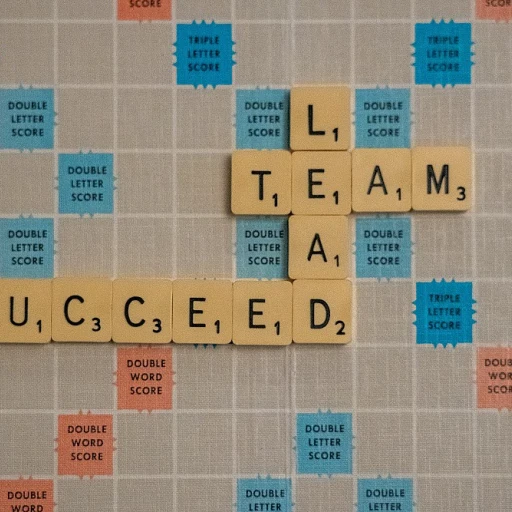
Introduction to Geometric Dimensioning and Tolerancing
Unveiling the Basics of Geometric Dimensioning and Tolerancing
Geometric Dimensioning and Tolerancing (GDT or GD&T) is more than just a technical jargon—it’s an essential language used in engineering, specifically in the design and manufacturing sectors. For those who operate with parts and assemblies, understanding this concept is key for precision and efficiency.
GD&T uses symbols and notations to explicitly describe the geometry of an object, which helps in defining the design intent. Its framework standardizes communication across engineering designs, enabling seamless collaboration. Unlike traditional dimensioning methods, GD&T employs a universal language to control feature size, axis, orientation, and position.
The use of GD&T ensures that features and parts meet specifications consistently, contributing, for instance, to effective workforce management with technology. It prioritizes critical aspects like surface profiles, datum reference frames or control frames. This precise description plays a paramount role in CNC machining, ensuring each hole and surface meets the required tolerance zones.
With a combination of primary datum, secondary datum, and tertiary datum, GD&T creates a more structured reference frame. This is particularly beneficial when dealing with complex shapes and ensuring parts fit together as intended, despite variations in manufacturing. The concept of datum aligns not just with geometric factors but also with design and production objectives, ensuring true position is maintained throughout the process.
In summary, GD&T is a powerful tool that enhances clarity, accuracy, and productivity in the engineering and design sphere. Its application, from feature control to basic dimensions, demonstrates its vital role in achieving higher standards of precision and quality control in manufacturing.
The Role of Datum References in GDT
The Vital Connection Between Datum References and Geometric Dimensioning
In the realm of geometric dimensioning and tolerancing (GD&T), datum references serve as the backbone for establishing a consistent and precise representation of parts within a manufacturing or engineering context. These references are essential for communicating the design intent, ensuring that each feature is accurately represented in relation to each other within the specified tolerance zones. A datum is essentially a theoretical exact surface, line, or point that serves as a reference for other features on a part. By using datum references, engineers can ensure that the parts are measured consistently and reduce variations in manufacturing processes like CNC machining. This is where the feature control frame comes into play, as it outlines the relationships and position of datums and features within a part, contributing significantly to effective geometric dimensioning. The datum reference frame is a fundamental component in this equation as it provides the theoretical foundation for the position and orientation of features. This reference frame consists of a sequence of datum features which commonly includes a primary datum, a secondary datum, and a tertiary datum. The order reflects their importance in controlling the part’s functionality, beginning with the most critical reference. Within a control frame, the datum feature is indicated by symbols specifying each datum's role in the alignment of parts to basic dimensions. This is all about controlling features such as holes or axis surfaces to lie within the specified tolerance zones. As designers work with these features and dimensions, datum references ensure the accuracy and repeatability needed for high-quality production. Moreover, the use of datum planes and true position significantly aids in coordinating the relationships between features. Tolerances are applied to align features accurately according to the specified design, with each datum ensuring precision whether on the macro scale of entire parts or the micro level of specific features. For those seeking further insights into the technical interplay of datums within modern technological applications, our comprehensive piece on the role of subscriber identity module cards in work tech provides additional context into how these fundamentals influence other technological domains.Three Datum Reference Framework
Navigating the Three-Datum System in Engineering Design
In the world of geometric dimensioning and tolerancing (GD&T), datum references play a critical role in defining the relationships between parts and ensuring precise control over features. The three-datum reference system offers a robust framework for controlling the features of components, optimizing their tolerance zones, and ensuring design intent is faithfully adhered to.
The foundation of this system is built upon a primary datum, secondary datum, and tertiary datum. These three planes or axes create a complete reference frame that facilitates accurate positioning and alignment of parts. In CNC machining, for instance, these datums are crucial for maintaining feature size and true position, ensuring each element aligns with its intended design specifications.
To efficiently employ this system, understanding the hierarchy of datum features is essential. Each datum serves as a control frame, providing a stable reference for other features. The sequence of referencing is strategic: the primary datum establishes the main control, typically influenced by the material condition or dimensional requirements, followed by secondary and tertiary datums that refine the control to achieve required tolerances.
Common symbols and tools assist in conveying the required tolerances and dimensions. Feature control frames specify the tolerance zone shapes and sizes, ensuring that surface and axis positions comply with the predefined geometric constraints.
However, using three-datum references can introduce challenges such as misalignment in the coordinate system if not properly implemented. Engineering teams must leverage the power of accurate dimensioning tolerancing to fine-tune these elements, thereby improving component reliability and compatibility.
For those seeking to enhance their understanding and application of such frameworks, integrating technological solutions can play a pivotal role in mastering and optimizing these sophisticated GDT systems.
Challenges in Implementing Three Datum References
Overcoming the Complexities of Datum Reference Implementation
Implementing a three datum reference framework in geometric dimensioning and tolerancing (GD&T) can present several challenges. These challenges often arise from the intricate nature of aligning datum features with the design intent and ensuring that all parts fit within the specified tolerance zones. Here, we delve into some of the key obstacles faced by engineers and designers.
Understanding Datum Feature Selection
One of the primary challenges is selecting the appropriate datum features. The choice of datum features significantly impacts the control frame and the overall accuracy of the design. Engineers must carefully consider the feature size, material condition, and the role of each datum in the reference frame. Incorrect selection can lead to misalignment and increased manufacturing costs.
Maintaining Tolerance Zones
Another challenge is maintaining the specified tolerance zones. The tolerance zone defines the permissible variation in the position and orientation of features. Ensuring that these zones are adhered to requires precise control, especially when dealing with complex parts and surfaces. This is where CNC machining plays a crucial role, as it offers the precision needed to achieve true position and maintain basic dimensions.
Aligning with the Coordinate System
Aligning the datum reference frame with the coordinate system is also a critical task. This alignment ensures that the primary, secondary, and tertiary datums are correctly positioned, which is essential for accurate dimensioning tolerancing. Misalignment can lead to errors in the geometric design and affect the overall functionality of the product.
Communication and Interpretation
Finally, effective communication and interpretation of GD&T symbols and notations are vital. Misinterpretation can lead to errors in the manufacturing process and compromise the design intent. It is essential for all stakeholders, from design engineers to machinists, to have a clear understanding of the GD&T principles and the role of datum references.
Addressing these challenges requires a comprehensive understanding of GD&T principles and a collaborative approach among all parties involved in the engineering and manufacturing processes. By focusing on these areas, organizations can enhance their design accuracy and improve the efficiency of their production workflows.












